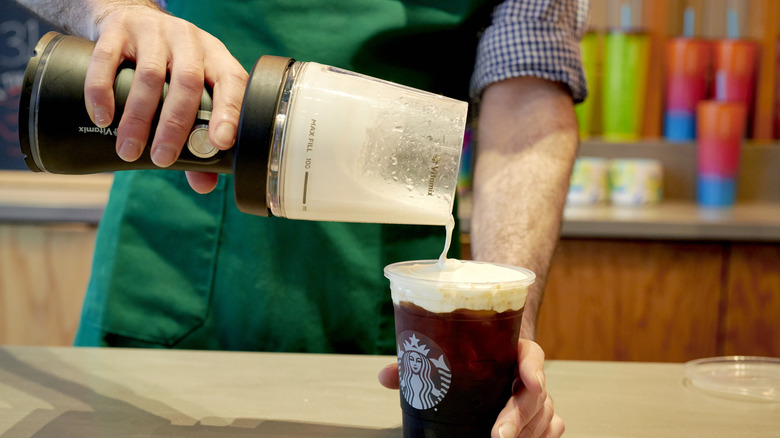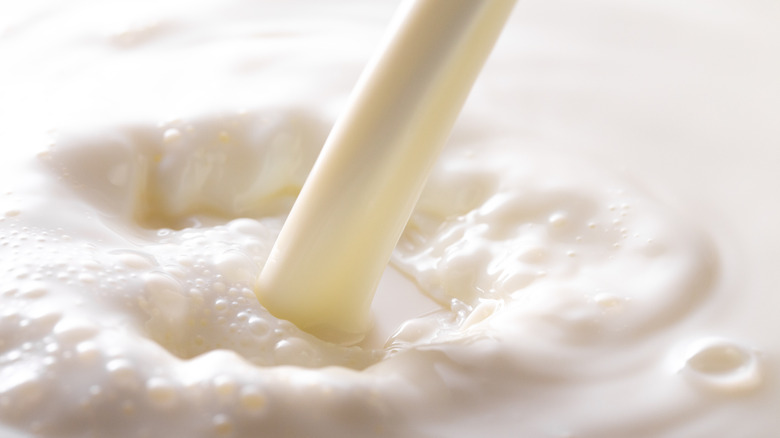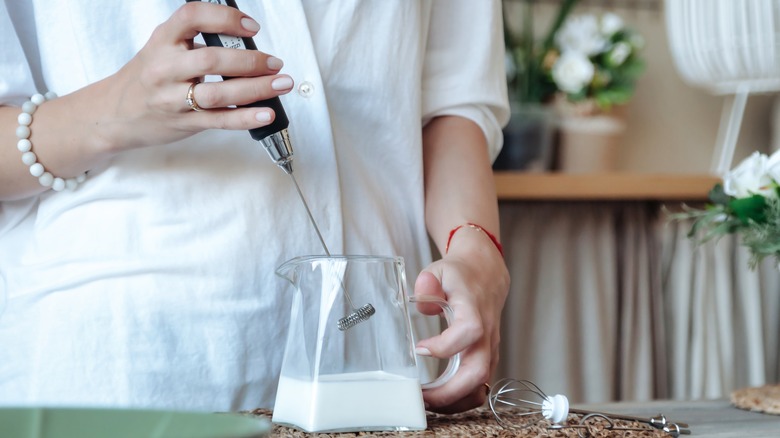The Standout Milk For Delicious Frothy Cold Foam
Cold foam first made its appearance — according to Starbucks — back in December 2014 when it launched the milky topping in one of its stores located in Seattle. Four years later, the foamy milk became available in the rest of Starbucks' stores and is now a staple many coffee lovers can't live without. Of course, while Starbucks claims to have first come up with this type of cold milk topping, it may still have been around before.
Regardless of when or by whom cold foam was first frothed up, today, it's a topping that you can get in a number of coffee chains or even make yourself at home. However, if you're going the DIY route, it pays to use the right kind of milk. For fluffy, well-frothed cold foam, skim milk is the best option. Of course, there's a reason why this is the best milk to pick if you're going to make this coffee add-in, and knowing about it can help make your frothing job easier.
Why skim milk is the best choice for cold foam
When it comes to making cold foam, skim milk is the best choice for two different reasons. Skim milk contains a higher protein-to-fat ratio than milk, such as 2% or whole milk (which both have more fat and fewer proteins). As a result, skim milk tends to create a sturdier version. This works because of how cold foam is formed; to make it, you have to fluff or beat milk, causing air particles to get trapped in a web of proteins. The more proteins you have, the sturdier the web is.
Besides the protein percentage in skim milk, the fat content is also essential. As most of us know, skim milk contains less fat than 2% or whole milk. When you make cold foam, the fat in the milk is heavier than the proteins and can burden the protein network. This can make it hard to get a fluffy, aerated consistency that sticks. Instead, your cold foam can collapse and reform into regular liquid milk. As a result, using a lower percentage can get you a better foam.
What happens if you use other types of milk to make cold foam?
Although skim milk might be the best pick for frothing milk into cold foam, that's not to say that you absolutely can't use other varieties. However, the cold foam produced by other milk types might look slightly different. In dairy milk, if you use 2% or whole milk, you may find that the bubbles in your cold foam collapse too quickly or that the milk doesn't whip up correctly. On the other hand, subbing heavy cream for skim milk can lead to you just making homemade whipped cream rather than cold foam!
In terms of non-dairy kinds of milk, many don't foam up much at all. If you want to make vegan or diet and allergen-friendly cold foam, your best bet is to look for milk containing proteins and stabilizers as well as liquids that tend to be thicker. You can also look for barista blends — specially formulated non-dairy milks for frothing and fluffing. With these tricks up your sleeve, you're ready to make the perfect cold foam drinks for sipping on during a hot afternoon!


